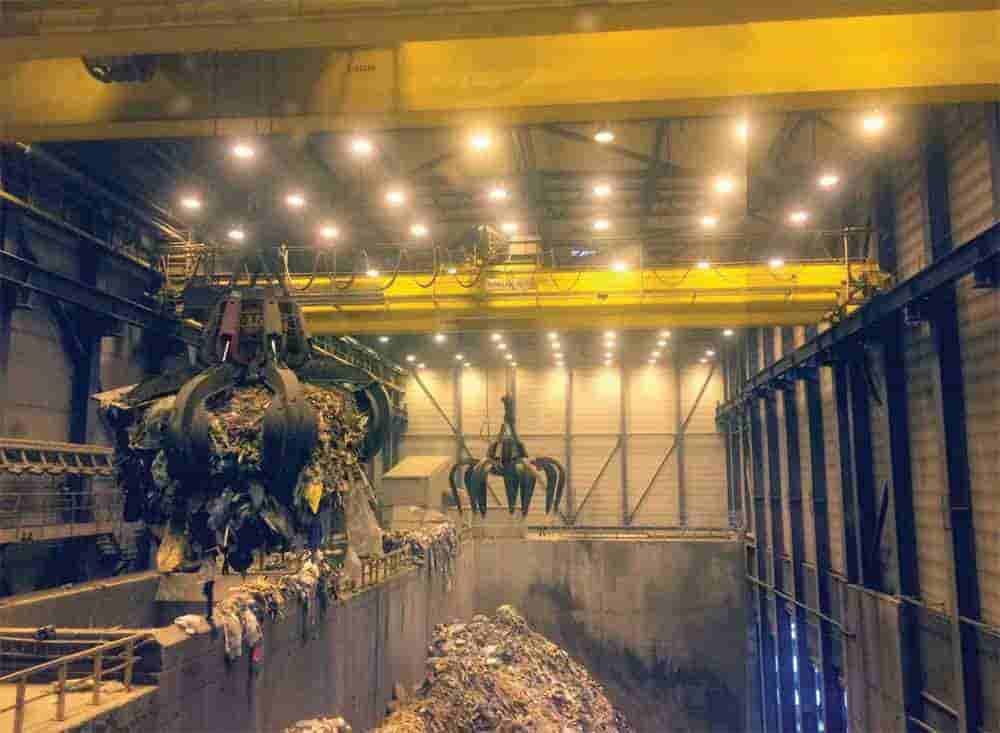Customized bridge cranes can better adapt to complex working environments and play a positive role in improving work efficiency. The case that Dongqi Crane will share today is one of the world’s leading waste-to-energy plants in Sweden. When customizing a bridge crane, the crane was equipped with an anti-sway system to improve work efficiency. Dongqi Crane will analyze how the anti-sway system works in this working environment and improves work efficiency.
Each waste-to-energy plant has a storage pit into which garbage trucks deliver waste during daytime operations. In a typical arrangement, two high-capacity bridge cranes are used to mix and distribute waste within the storage pit and to feed the incinerator hopper as required by the incinerator process computer.
Waste pit cranes are process cranes specifically designed to operate continuously for decades in harsh environments, in part because waste pits are very unfriendly workplaces for maintenance operations. The traveling speed and lifting speed of the bridge crane are unusually high, and the lifting height during normal operation is 5-35m. Waste storage cranes are equipped with grabs to pick up waste, and in modern installations these grabs are electro-hydraulic and cost around €100,000 each. While a trash pit isn’t the best place for a crane maintenance crew, a trash grab is an even worse place to repair damage to. Therefore, the process must be designed so that the grab will not be damaged due to collision with the pit wall.
While cranes typically operate near pit walls with load swing lengths of 10-35m, even relatively small load swings can produce high impact forces that can damage grab hydraulics, mechanisms or controls. A well-designed control system can reduce stress and wear on the crane machinery and protect the waste grab from collisions, which can significantly reduce the maintenance cost of the waste-to-energy plant and prevent production interruptions.
Waste-to-energy cranes are applications with very high requirements on swing control systems. The crane has a very high lifting speed and must be positioned accurately and avoid collisions when the load height changes rapidly. The crane operates continuously near the walls of the refuse pit, so the sway control system must be able to react quickly without reducing the crane’s handling capabilities. The system must also be able to optimize movements over short distances when the crane is operating with long load swing lengths, where one load swing period can last up to ten seconds.

When a crane company customizes an overhead crane for a customer, it must clearly understand the technical requirements of the working environment for the overhead crane. The technical requirements for grab bridge cranes in waste incineration power plants are all-round. They require the equipment to work stably in harsh environments and have sufficient lifting capacity and accuracy. At the same time, safety and Maintenance convenience. These requirements together constitute the technical demand system for grab bridge cranes in waste incineration power plants. It can be summarized as follows:
Contact our crane specialists
Send us a message and we will get back to you as soon as possible.